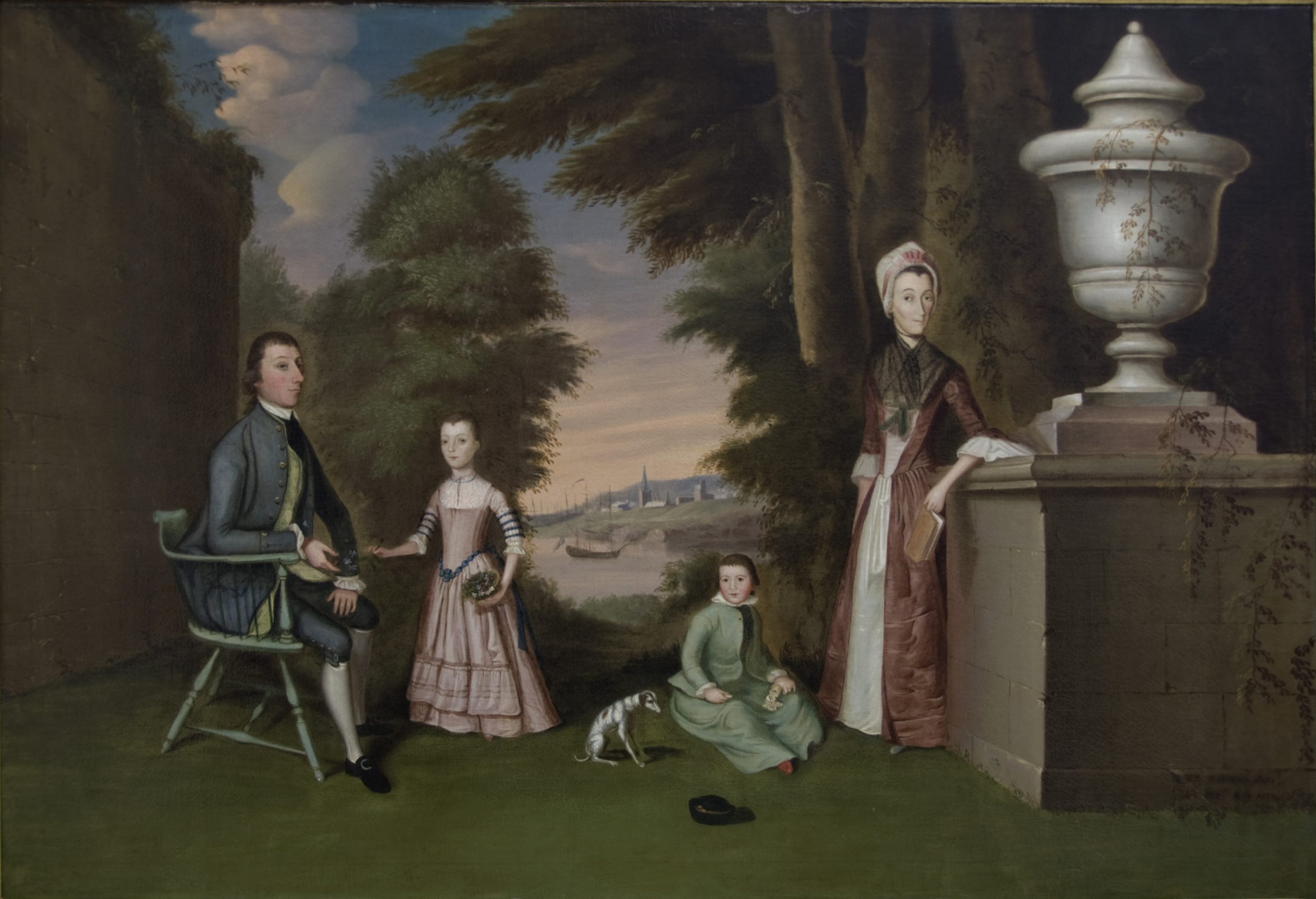
William Williams (American, 1727-1791) The (William) Denning Family, 1772, Oil on canvas, 35 ½ x 52 inches

Benjamin West (American, 1738-1820), Mrs. Thomas Keyes and Her Daughter, c. 1806, Oil on panel, 33 x 23 ¼ inches
A term one sometimes hears used when discussing eighteenth-century Anglosphere (basically, Britain and its various colonies) art is “conversation piece.” When I started in my Ph.D. program in 2010, I do not believe I had heard it before; if I had, I certainly didn’t give it much thought. Conversation pieces—the precise definition of which I’ll get to in a minute—are a type of portraiture, and I am moderately ashamed to admit that I didn’t much care about portraiture earlier in my career. I fancied myself a budding expert in printmaking and other arts aimed at popular audiences (my master’s thesis was on the lithography firm Currier and Ives), and self-indulgent depictions of wealthy elites failed to move the needle for me. As I have written before in this space, my work as the American Art Research Fellow has given me the opportunity to reevaluate my preconceived notions and to challenge what I think I know about American art.
The Rollins Museum of Art is quite strong in American portraiture—and not just dog portraiture! You may remember, in fact, that the very first entry in this series was about Gilbert Stuart, one of the most well-known American portrait painters of the Early Republican period. With the arrival of the Andersen Collection this area of strength gets even stronger. Two of the most exciting new additions are group portraits by Benjamin West and William Williams. West you have likely heard of. He was one of the first Americans to make his name in the London art world, securing the patronage of King George III and becoming the second president of the Royal Academy. Williams, however, is more obscure. Born in Bristol, he spent some time as a sailor before ending up in Philadelphia, where he advertised his services as a painter. It was there that he met the young Benjamin West, who had recently moved from rural Pennsylvania to the city. Though only eleven years West’s senior, Williams became his first mentor, sharing with the younger man not only his knowledge of painting, but his library of prints and art books, both invaluable commodities in the then relatively unsophisticated American colonies.
West would go on to a remarkable career, while Williams remained a workaday painter in what was then a backwater. The two paintings, however, share much in common. In both, the figures regard the viewer, swathed in late-eighteenth-century finery and surrounded by evidence of material comfort. The works, however, belong to two slightly different but related portrait traditions. West’s is a relatively small-scale example of the Grand Manner portrait style, in which sitters are arrayed in their finery, surrounded by studio props and idealized landscapes. The goal is to emphasize their refinement and good taste.
The work by Williams, on the other hand, is a conversation piece. This is where the confession in the title comes in. I encountered the term here and there—you can hardly avoid it when studying the history of American art—but I never thought about it too hard. If you had asked me, I would have probably said conversation pieces were meant to prompt conversation among their erudite Enlightenment-era viewers. My disinterest in portraiture kept me from thinking about it too hard, to be honest. Of course, I would have had it exactly backwards: conversation pieces depict conversations, not prompt them (though they may do both, of course). In contrast with the formality of the Grand Manner, they are intended to show sitters in a more relaxed and natural state, interacting with one another and their environment. They are characterized by the attention to detail not just in depicting the sitters, but also their environment. Though it’s somewhat hard to believe from the vantage of our more casual era, that’s just what Williams is doing in The (William) Denning Family. Denning and his daughter form one group, while his wife, son, and dog form another. Interestingly, they are shown not in the idealized space of the Grand Manner, but in their actual garden, specifically in the family house Wall Street in Manhattan. I’m very grateful to have spent some time with this work, renewing and refining my familiarity with that quintessential eighteenth-century art form: the conversation piece.
Grant Hamming, Ph.D.
American Art Research Fellow
To read more on these works by William Williams, visit our Collection page.



